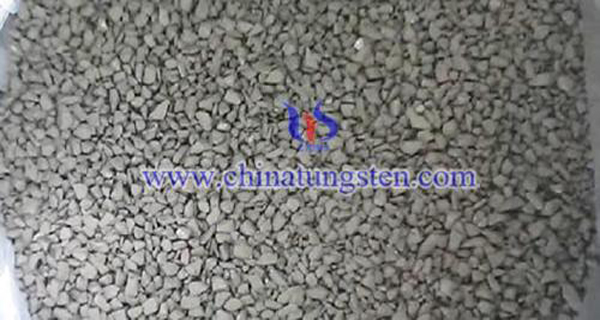High-end Tungsten Catalyst Conversion Ethylene Glycol
- Details
- Category: Tungsten Information
- Published on Sunday, 16 December 2018 15:58
At present, the raw materials of organic chemicals and energy industry mainly come from fossil resources such as coal, oil and natural gas. The depletion of fossil resources and the deterioration of ecological environment force people to seek new ways to synthesize chemicals and fuels from renewable resources.

The discovery of a new reaction pathway for direct conversion of cellulose to ethylene glycol can not only alleviate the pressures of industrial production which is highly dependent on petroleum ethylene resources to produce ethylene glycol as an important bulk energy chemical, but also avoid the drawbacks of "competing with agriculture" and "competing with people" brought about by the production of bulk chemicals from grain. In the process of conversion, efficient catalyst is an important and indispensable key. High-end tungsten composite catalysts have become a research hotspot in multi-material storage.
Some scholars have used a mesoporous support to support a nickel-tungsten carbide catalyst to increase the yield of ethylene glycol to 74.4-76.1%. However, the high ethylene glycol yield is obtained depending on the large amount of tungsten used (15-40% by weight of tungsten in the catalyst), and the specific rate of ethylene glycol formation is also small, costly and inefficient. Therefore, some scholars have further improved the preparation method of nickel-tungsten carbide catalyst to prepare a nickel-tungsten carbide nanofiber composite catalyst.
The preparation method comprises the following steps:
A. 0.0149 mmol of nickel chloride hexahydrate, 0.0149 mmol of sodium tungstate dihydrate, 4.97 mmol of zinc acetate dihydrate and 6 mmol of trimesic acid (H3BTC, 1.25 g) were dissolved in 50 mL of DMF and stirred at room temperature. After 30 min, and crystallizing at 140 °C for 12 h; after crystallization, cooling, filtration, washing with DMF, and then drying at 80 °C for 5 h, to obtain nickel tungsten zinc trimetallic organometallic skeleton compound (nickel tungsten zinc trimetallic organic metal skeleton fiber);
B. The nickel tungsten zinc trimetallic organometallic skeleton fiber powder obtained above is placed in a quartz boat, heated to 950 °C at a rate of 5 °C / min in a nitrogen atmosphere, and maintained at this temperature for 6 h to obtain nickel - The tungsten carbide/porous carbon nanofiber composite catalyst prepared catalyst had a BET specific surface area of 848 m2 g-1 , a mesoporous pore diameter of 3.9 nm, a pore diameter of 0.6 nm, and a pore volume of 0.9 cm3 g-1 .
Nickel-tungsten carbide nanofibers composite catalyst has solved the problem that high yield of ethylene glycol is obtained by relying on high content tungsten catalyst in this field. It is of great significance to the preparation of energy chemicals through biomass conversion to achieve multiple benefits such as economy, environmental protection and sustainable development.
- Tungsten Manufacturer & Supplier, Chinatungsten Online: www.chinatungsten.com
- Tungsten News & Prices of China Tungsten Industry Association: www.ctia.com.cn
- Molybdenum News & Price: news.molybdenum.com.cn
- Tel.: 86 592 5129696; Fax: 86 592 5129797; Email: sales@chinatungsten.com



 sales@chinatungsten.com
sales@chinatungsten.com